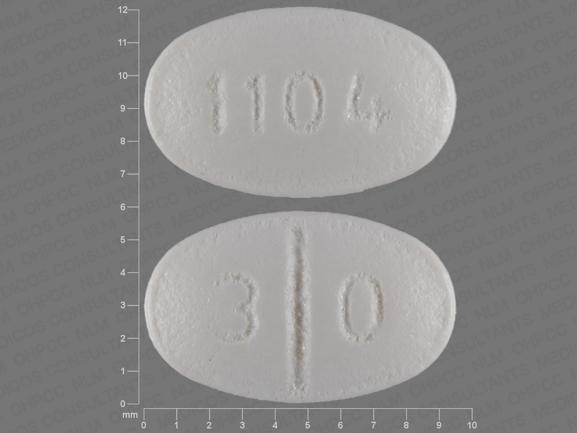Isosorbide Mononitrate Dosage
Medically reviewed by Drugs.com. Last updated on Jul 25, 2025.
Applies to the following strengths: 20 mg; 120 mg; 30 mg; 60 mg; 10 mg
Usual Adult Dose for:
Additional dosage information:
Usual Adult Dose for Angina Pectoris Prophylaxis
IMMEDIATE RELEASE:
20 mg orally twice a day, 7 hours apart
Comments:
- Consider 5 mg twice daily for small statured patients; increase to at least 10 mg twice daily in first 2 to 3 days.
- Asymmetric dosing (7 hours apart) provides a nitrate-free interval to minimize tolerance.
- Start at the low end of the dosing range for elderly patients.
- Doses above 20 mg twice daily have not been adequately studied; 5 mg twice daily is clearly effective for only the first day.
Use: Prevention and treatment of angina pectoris due to coronary artery disease; onset of action is not sufficiently rapid to be useful in aborting an acute anginal episode.
EXTENDED RELEASE:
30 to 60 mg orally once a day in the morning
Maximum dose: 240 mg orally once a day in the morning
Comments:
- Swallow whole (do not crush or chew) with half-glass of fluid.
- Start at low end of dosing range for elderly patients.
Use: Prevention of angina pectoris due to coronary artery disease; onset of action is not sufficiently rapid to be useful in aborting an acute anginal episode.
Usual Adult Dose for Angina Pectoris
IMMEDIATE RELEASE:
20 mg orally twice a day, 7 hours apart
Comments:
- Consider 5 mg twice daily for small statured patients; increase to at least 10 mg twice daily in first 2 to 3 days.
- Asymmetric dosing (7 hours apart) provides a nitrate-free interval to minimize tolerance.
- Start at the low end of the dosing range for elderly patients.
- Doses above 20 mg twice daily have not been adequately studied; 5 mg twice daily is clearly effective for only the first day.
Use: Prevention and treatment of angina pectoris due to coronary artery disease; onset of action is not sufficiently rapid to be useful in aborting an acute anginal episode.
EXTENDED RELEASE:
30 to 60 mg orally once a day in the morning
Maximum dose: 240 mg orally once a day in the morning
Comments:
- Swallow whole (do not crush or chew) with half-glass of fluid.
- Start at low end of dosing range for elderly patients.
Use: Prevention of angina pectoris due to coronary artery disease; onset of action is not sufficiently rapid to be useful in aborting an acute anginal episode.
Renal Dose Adjustments
No adjustment recommended
Liver Dose Adjustments
No adjustment recommended
Precautions
Safety and efficacy have not been established in patients younger than 18 years.
Consult WARNINGS section for additional precautions.
Dialysis
No adjustment recommended
More about isosorbide mononitrate
- Check interactions
- Compare alternatives
- Pricing & coupons
- Reviews (110)
- Drug images
- Side effects
- During pregnancy
- Drug class: antianginal agents
- En español
Patient resources
- Isosorbide drug information
- Isosorbide Mononitrate Extended-Release Tablets
- Isosorbide Mononitrate Tablets
Other brands
Professional resources
Other brands
Related treatment guides
See also:
Further information
Always consult your healthcare provider to ensure the information displayed on this page applies to your personal circumstances.


